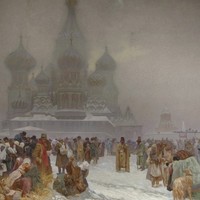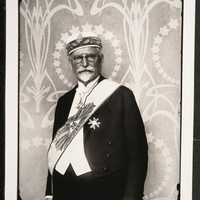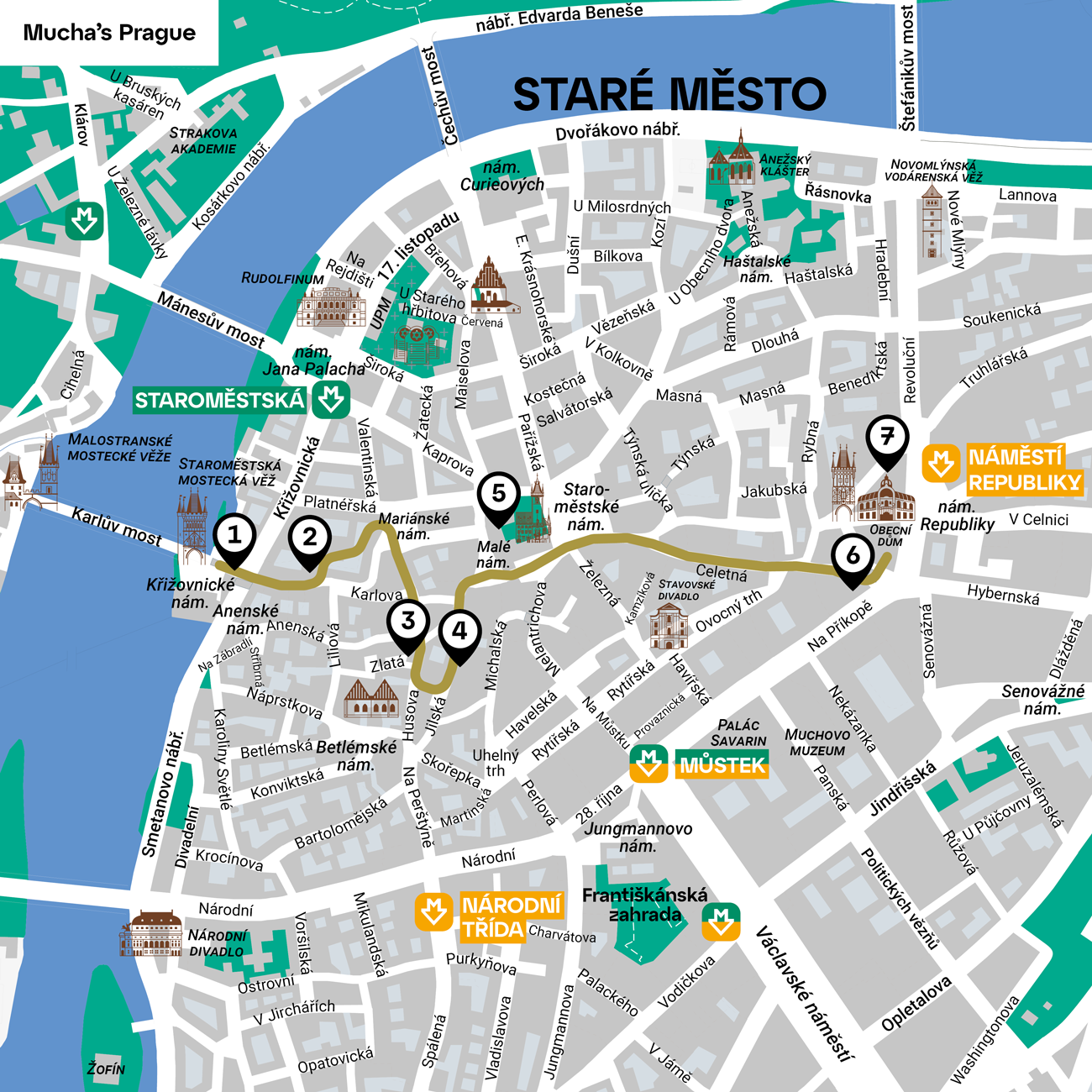Breadcrumbs navigation
II. Mucha’s Prague
Walking route: Křižovnické náměstí square – Klementinum – Husova street 9 – Jalovcová street – Jilská street – Old Town Hall – Celetná street – Czech National Bank – Municipal House
Křižovnické náměstí square
This walk starts at Křižovnické náměstí just by Charles Bridge, with a view of the 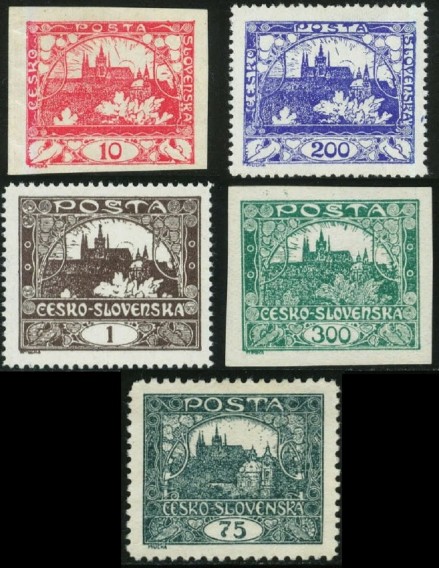 castle panorama of Hradčany, Malá Strana and Petřín. It is this iconic view of Prague, with Prague Castle and the spires of the Cathedral of Sts Vitus, Wenceslas and Adalbert and the Church of St Nicholas, that also appears quite often in the graphics of Alphonse Mucha dating from the founding of the Czechoslovak state, i.e. after 1918. We find it on Mucha’s banknotes aka “muchovky” – which we will tell you more about at the end of this walk, as well as his first Czechoslovak postage-stamp series. On Mucha’s stamps, the panorama of Hradčany is complemented by the motif of the rising sun as a symbol of national freedom. Over the course of eighteen months, the Post Office issued a total of 26 variants of Mucha stamps featuring Hradčany, in various denominations and colours. The last Hradčany stamp went on sale in April 1920.
castle panorama of Hradčany, Malá Strana and Petřín. It is this iconic view of Prague, with Prague Castle and the spires of the Cathedral of Sts Vitus, Wenceslas and Adalbert and the Church of St Nicholas, that also appears quite often in the graphics of Alphonse Mucha dating from the founding of the Czechoslovak state, i.e. after 1918. We find it on Mucha’s banknotes aka “muchovky” – which we will tell you more about at the end of this walk, as well as his first Czechoslovak postage-stamp series. On Mucha’s stamps, the panorama of Hradčany is complemented by the motif of the rising sun as a symbol of national freedom. Over the course of eighteen months, the Post Office issued a total of 26 variants of Mucha stamps featuring Hradčany, in various denominations and colours. The last Hradčany stamp went on sale in April 1920.
If you turn your gaze further to the left, you’ll see an oasis of greenery within the city centre – Petřín Hill, crowned by the Petřín Lookout Tower of 1891, built on the occasion of the Jubilee Territorial Exhibition as a scaled-down tribute to the Eiffel Tower in Paris.
In the lower part of Petřín Hill is a garden with the Kinsky Summer Palace, which is closely linked to the beginnings of Czech modern art, but also to Alphonse Mucha.
In 1902, the first international exhibition of the famous French sculptor Auguste Rodin was held in Prague. Alphonse Mucha accompanied the sculptor on this journey from Paris as his faithful friend and translator. The arrival of the French delegation to Bohemia was accompanied by many cultural events and gatherings. The exhibition venue was a new exhibition hall built for the occasion on the edge of the Kinsky Garden. It was built to the design of Jan Kotěra, in the Art Nouveau style. In the following years, the hall hosted a number of important exhibitions that influenced the direction of Czech art (1905 Edward Munch or 1910 Paul Cézanne, Henri Matisse). Rodin’s exhibition in 1902 became a major developmental milestone in the cultural life of Bohemia and a departure from the traditional orientation towards Vienna. For Alphonse Mucha, however, this expedition had a detrimental effect. He hoped to befriend the Czech art community, but the very opposite took place. This was also due to his pronouncements at the Academy of Fine Arts during a convivial meeting of Czech artists with Auguste Rodin, where he all too bluntly expressed his opinions about the provincial nature of Czech art at that time.
The Klementinum
From Křižovnické square, take Karlova street. On your left you will pass the early Baroque church of St Salvator, the oval ‘Italian’ Chapel (Vlašská kaple) and the Church of St Clement. In Karlova street No. 1, take the passage into the Klementinum complex. You will find yourself in the courtyard of the former Jesuit College, where the National Library of the Czech Republic is based today.
The Klementinum complex is the second largest complex of historical buildings in Prague (after Prague Castle) with many hidden gems worth seeing – e.g. the famous Mirror Chapel with illusionist High Baroque wall paintings, or the Astronomical Tower.
The eastern wing of the Klementinum housed the Academy of Fine Arts from its founding (in 1799) until 1886. It was in 1878 that the then eighteen-year-old Alphonse Mucha also applied to study at the Prague Academy. A week after his written submission of the application, with attached examples of his work, he received a harsh recommendation to choose a different life direction. Mucha did not give up so easily and for the first time in his life ventured to Prague, making his way right into the studio of Academy Professor Antonín Lhota. But his second attempt was not successful either. The professor threw him out after five minutes, saying: ‘There are many painters, but there’s very little money. You’d best find other employment, where you can do better.’ (as quoted in the monograph by Jiří Mucha).
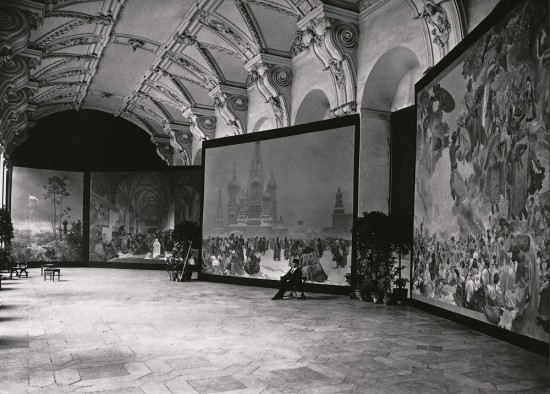
By the time Mucha came back to the Klementinum in 1919 he did so figuratively, as a world-renowned artist. An exhibition was opened in the summer refectory, where people had the opportunity to see a part of the Slav Epic for the first time. Of the eleven finished paintings, five were exhibited, namely The Celebration of Svantovit in Rujana, the Abolition of Serfdom in Russia and the Hussite Triptych The divination of the Word. The premises of the summer refectory are now used as the General Study Room of the National Library of the Czech Republic.
Husova street, Jalovcová street, Jilská street
Walk through the Klementinum to Mariánské náměstí square. Coming out of Mariánské square on the right is Husova street. It was here, at No. 9 that the first Grand Lodge of the Czechoslovak Masonic Lodges was located, from the autumn of 1923.
Alphonse Mucha was a sympathizer of the Freemasons from an early age, as reflected in the symbolism he used in his early works (e.g. his 1896 Zodiac). He was first admitted to the Freemasons in Paris on 25 January 1898. When the Czech Lodge was established after the founding of the independent republic, he became one of its most active members. He designed the emblems, seals, letterheads and diplomas for honorary members. He supported the activities of the Lodge financially, but also intellectually. He prepared the Czech Masonic nomenclature, the statutes, and translated the French-language ceremony of ‘bringing to light’. Mucha is also the author of a book on Freemasonry, which he published on the occasion of the 333rd anniversary of the birth of J. A. Comenius, the spiritual founder of the Czech Lodge. Mucha promoted the ideas of Freemasonry as much as he could in his art, which is full of complex symbolism. At the official gathering of the Supreme Council for Czechoslovakia on May 28, 1922, he was appointed ‘Sovereign Grand Commander’.
Now we turn back and right along Jalovcova street, continue left along Jilská street and Karlova street to Malé náměstí square and then right to Old Town Square.
Old Town Hall
The Old Town Hall is a complex of buildings, many of which have a Romanesque core from the 12th century. It is especially known for its 14th century tower with a beautiful bay-windowed chapel and its astronomical clock. Throughout Czech history, the fate of the country has been decided here many times. The fate of Alphonse Mucha was also interwoven with this place. It was here in 1902, when he visited Prague accompanying the famous French sculptor Auguste Rodin on his Prague exhibition, that the whole entourage was ceremonially welcomed by Mayor Vladimír Srb. This mayor was an important and culturally educated figure, who supported the new direction of Czech fine art towards Paris ‘leading Prague out of the provinces into Europe’. It was probably here that the decision was made to entrust Mucha with a part of the decoration of the Municipal House, one of his landmark commissions.
Celetná – the Czech National Bank building
From the Old Town Square, go along Celetná street to the end, then through the late-Gothic Powder Tower, and you will find yourself in Na Příkopě street. The monumental Functionalist building opposite you, on the corner of Na Příkopě and Senovážná streets, is the headquarters of the Czech National Bank. It was built between 1935-42 to the design of architect František Roith. Here, too, we will find Mucha’s legacy ‘footprints’. In the French-speaking world and indeed the world at large, Mucha is best-known in connection with his poster work, and in Bohemia he is especially famous for his large-format canvasses of the Slav Epic. What is less well known about him is that during the early First Republic period his work also consisted of small graphic artworks, such as the designs of postage stamps and banknotes. To help the newly emerging state, Alphonse Mucha sent several of his proposals for banknotes to the then Minister of Finance Alois Rašín just after the events of October 1918, saying that he was waiving his royalty rights. He was at once entrusted with designing the entire set of banknotes, which became known after him as the “muchovky”, in denominations from 10 to 500 Czechoslovak crowns. Some depict his wife Maruška, others his daughter Jaroslava. We also find depicted vistas of Prague Castle. Since his surname in Czech suggests a fly, in Moravian dialect, the entire collection of these wordplay ‘fly-papers’ can be seen as part of the banknote exhibit in Czech National Bank building.
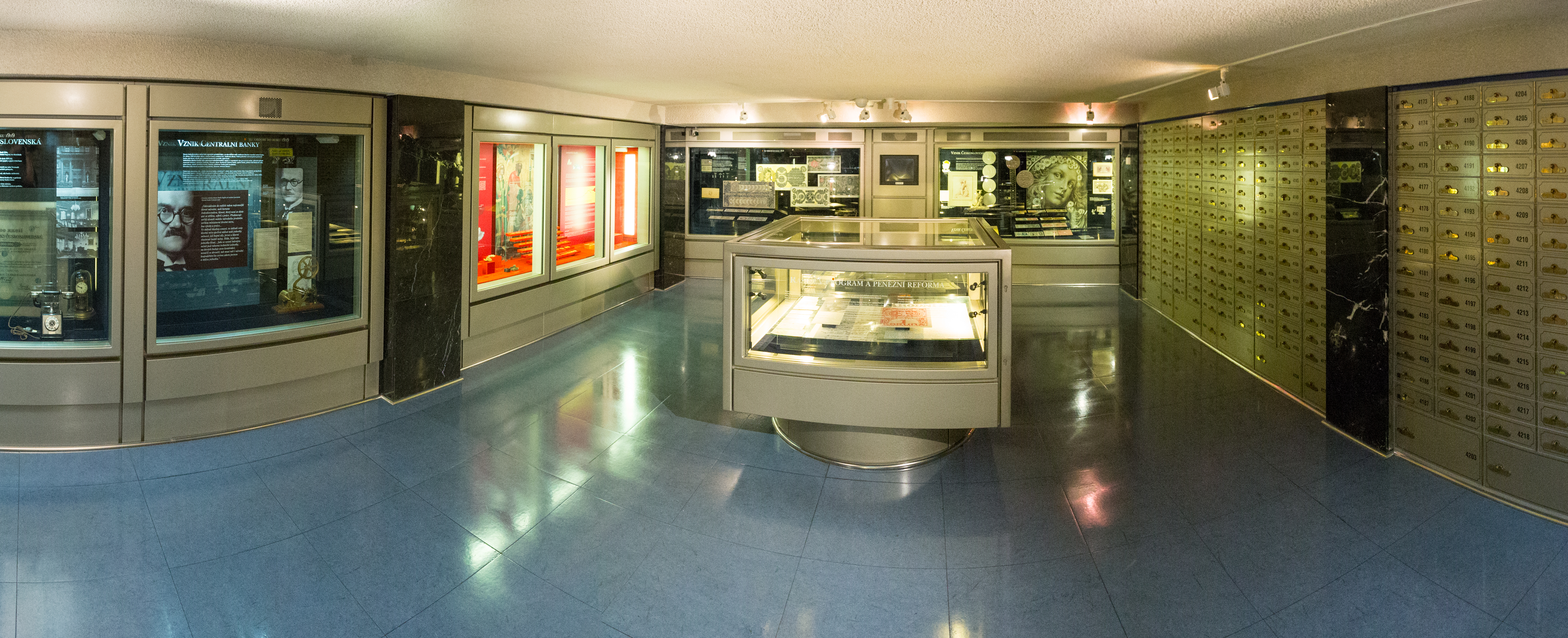
The Municipal House
The location of the Municipal House building, connected by a neo-Renaissance skyway to the Powder Tower is full of history. The former King’s Court was once located here, the setting-off point for the coronation processions to Prague Castle. The Municipal House was built between 1905-12 to the design of architects Osvald Polívka and Antonín Balšánek in the Art Nouveau style. The construction and decoration of the Municipal House became a huge artistic enterprise in early 20th century Prague. Leading Czech artists like Max Švabinský, Jan Preisler and Josef Václav Myslbek took part in its decoration. Alphonse Mucha expressed his interest in participating in the décor as early as 1902 during the Paris visit of Prague Mayor Vladimír Srb. From the onset he stressed that he would carry out the decoration free of charge, except for covering his costs for the designs, paints, preparatory canvasses and scaffolding. In 1909, Mucha was entrusted with the decoration of the Mayor’s Hall, one of the most prestigious spaces in the building. However, since he won the contract without a tender, he met with a wave of hostility from the Czech cultural public.
The Mayor’s Hall is situated in a circular bay directly above the main entrance. The ceiling is decorated with a fresco on the theme of Slavic Concord. The composition is made up of figural motifs that form a circle with a view opening to the sky, shaded by the wings of a flying eagle. On the walls, in lunettes, are paintings by Alphonse Mucha on aspirational themes: ‘With fortitude toward freedom, with love toward fidelity’ / ‘Humbled and tormented – thou shalt rise again, homeland unbounded’ / ‘Holy mother of thy son’s nation, take kindly to our love and enthusiasm’. The spandrels depict the personifications of virtues through Czech historical figures (Pugnacity – Jan Žižka, Fidelity – Jan Amos Comenius, Independence – George of Poděbrady, Justice – Jan Hus, etc.)
Alphonse Mucha authored not only the painting decoration of the hall, but also all the arts and crafts details, including the heating radiator grilles, windows, standing lighting and drapes. The hall thus makes for a stylistically unified work of art, which silenced the critics and doubters of Mucha’s abilities upon completion.
To round off your excursion do treat yourself to a guided tour of the entire Municipal House including the Mayor’s Hall, which is an unforgettable Art Nouveau experience in itself.

Route map
1. Křižovnické náměstí square (view of Prague Castle and Petřín Hill)
2. Klementinum (Karlova street 1)
3. Husova street 9
4. Jilská street
5. Malé náměstí square
6. Czech National Bank
7. Municipal House
TIP: Head to the Waldstein Riding School and visit the exhibition "Mucha: The Family Collection", presenting the artist's works in a way he has never been presented before.

